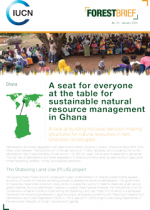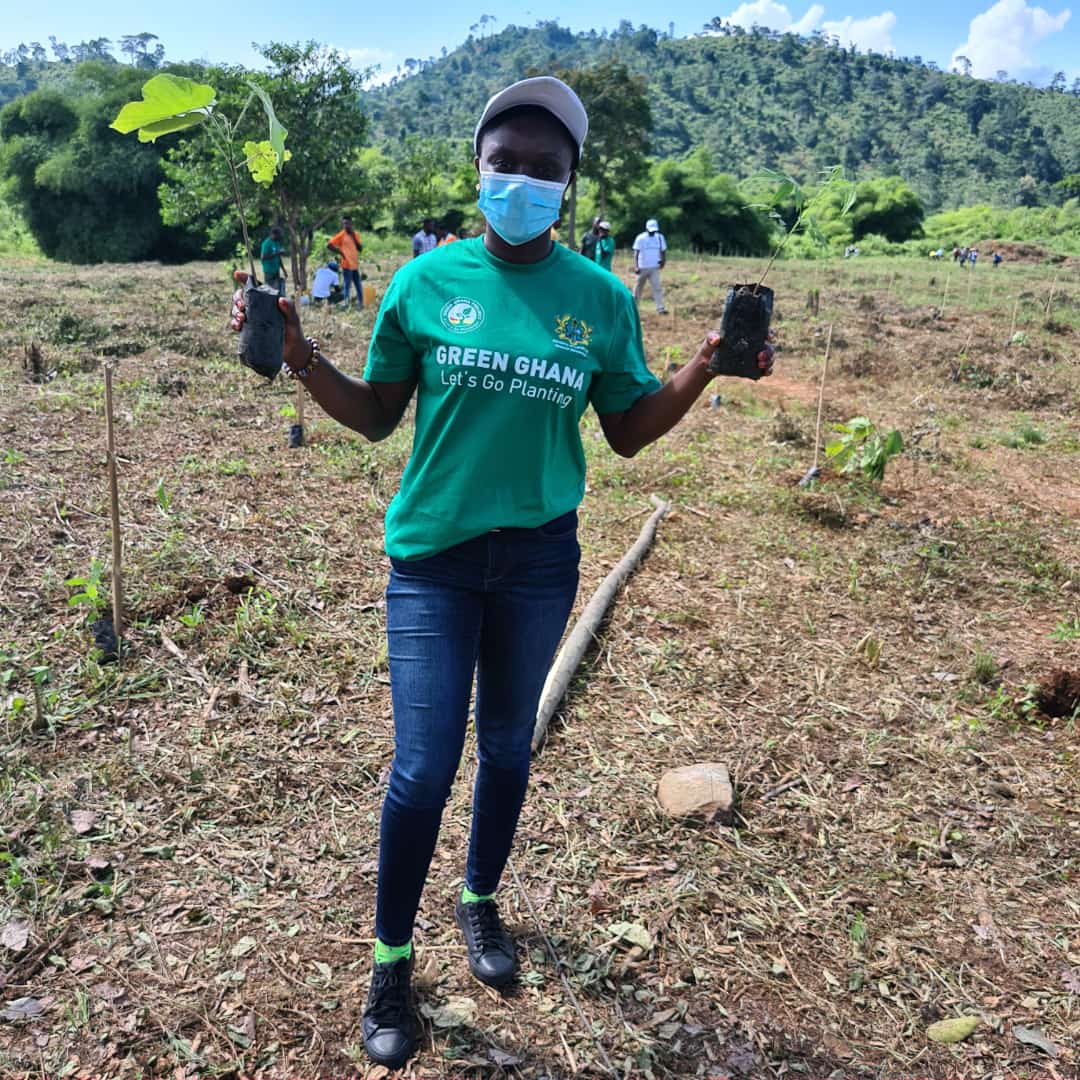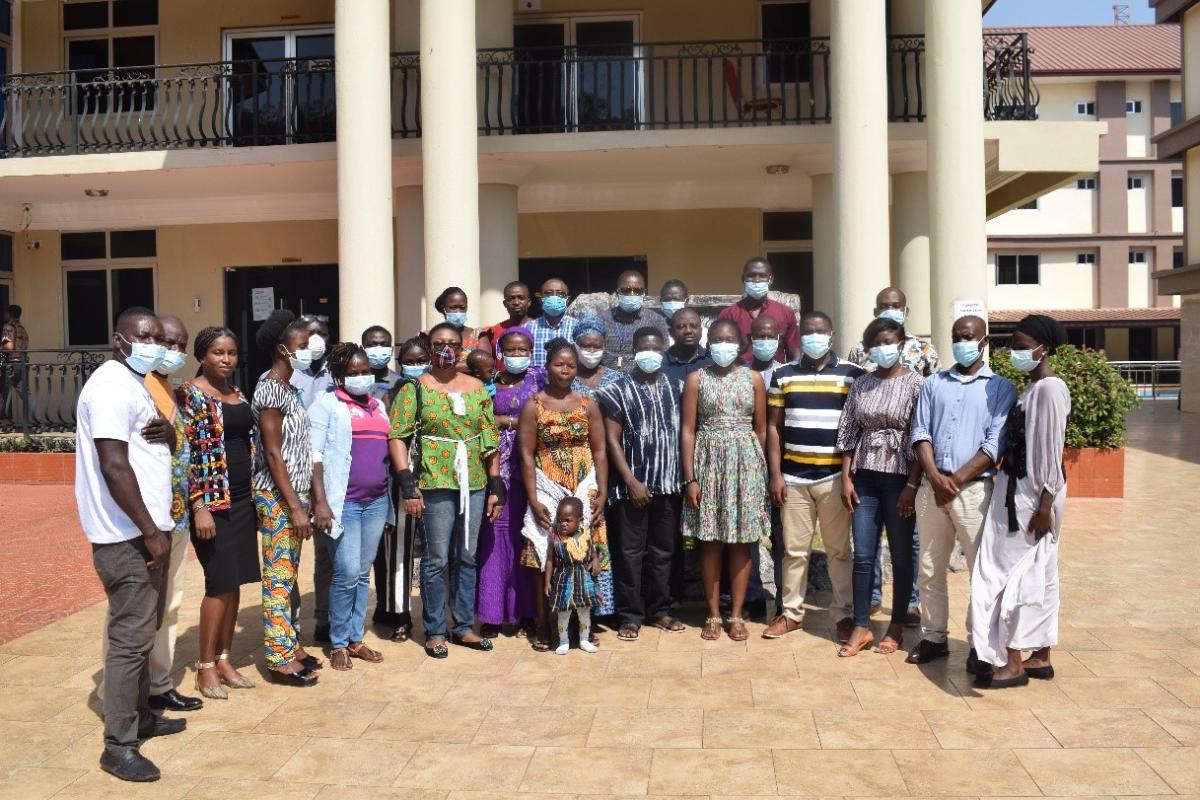Communities step up to manage their natural resources
Ghana lost about 60% of its forest cover in just over 50 years, and at the current deforestation rate of approximately 2% per year (135,000 ha/year), the situation is expected to get worse. The government has taken measures to address this, now it’s time for the people to make a difference. A new IUCN Forest Brief explores how communities in Ghana have stepped up to sustainably manage their natural resources.

Photo: IUCN
The high rate of deforestation in Ghana is of national and international concern, particularly as the forests are essential to the country’s largely agrarian economy. The increased rate of deforestation severely impacts the livelihoods of communities, with sizable impacts on women and the economy. The government of Ghana has developed and implemented several national programmes, policies, and initiatives to address this problem. With these policies in place, the challenge now is to foster innovative and inclusive approaches for communities to engage in natural resource management.
The PLUS project
One of the ways IUCN assists in this effort is through the Stabilizing Land Use Project (PLUS) with a focus on supporting the landscape approach for enhancing biodiversity in agricultural land and ecological connectivity. The project is focused in the Wassa Amenfi landscape in the western part in the high forest zone, and the Mole ecological landscape in the northern savannah zone. IUCN partners with Codesult Network and A Rocha Ghana in two of the landscapes, respectively.
A seat for everyone at the table for sustainable natural resource management in Ghana.
 Photo: IUCN
Photo: IUCN
IUCN, A Rocha Ghana and Codesult Network support and strengthen Community Resource Management Areas (CREMAs), which are mechanisms through which community members are given the authority and responsibility of protecting and managing their resources while reaping the benefits of a more equitable and productive landscape.
Women get more involved
Existing governance frameworks were used as foundation for the establishment of governance working groups to facilitate inclusive decision making in the landscapes through dialogues and capacity building. A range of approaches such as natural resources awareness campaigns, education, consultation, and training helped to bridge existing gender gaps and establish elevated roles for women and vulnerable groups in sustainable natural resource management and use. The PLUS project has contributed towards enhancing gender mainstreaming and responsiveness, leading to increased participation of women in decision-making.
No need to build from scratch
Indeed, IUCN worked with existing community and district level organisations and platforms to avoid creating new or duplicate structures as well as ensuring the sustainability of previous interventions. In all, the project supported five CREMAs in the two project landscapes, i.e., one in the Wassa Amenfi landscape and four in the Mole ecological landscape. The project also supported engagements towards the drafting of a constitution to lead the way for the consolidation of an institutionalised landscape level governance structure for the Mole Ecological landscape called the Protected Area Management Advisory Board. Further, in collaboration with key stakeholders in the two project landscapes, PLUS has facilitated the development of a landscape management strategy for each of them.
IUCN is working with partner organisations to ensure that the district assemblies within the two landscapes implement these strategies. Also, at the national level, a steering committee made of the representatives from key government and the non-government organisations has provided strategic direction as well as links with national-level policies. For instance, the project has contributed to the integration of CREMA activities into the development plans of District Assemblies. The governance working group in Wassa Amenfi has also been recognised by the government of Ghana (Forestry Commission) as a useful governance platform that the Ghana Cocoa Forest REDD+ Programme (GCRFP) will leverage on to establish a Hotspot Intervention Area management board for operationalisation of the GCFRP in Wassa Amenfi landscape. The Wassa Amenfi Landscape Management Strategy that was facilitated by the PLUS project would also provide a very useful over-arching framework which planned Hotspot Intervention Area management strategies would feed into to ensure synergy, coherence and sustainability. . The project is also contributing to various technical working groups and dialogues at the national level.
The PLUS project in Ghana is one of just a handful of examples across the world of the application of the landscape approach in practice, which brings together a wide range of stakeholders, whiles enhancing women’s participation, building on existing structures, and ensuring their sustainability through linking them with local and national processes. The learning from the experience in Ghana is relevant and useful for policymakers, donors practitioners, researchers, and NGOs as well as other stakeholders. This learning continues to inform the investment, design, and implementation of the landscape approach, which has gained a broader currency in the past two decades as an equitable and potentially successful way to address deforestation, land degradation, and development issues.
— Web story by Chetan Kumar and Saadia Bobtoya, IUCN


